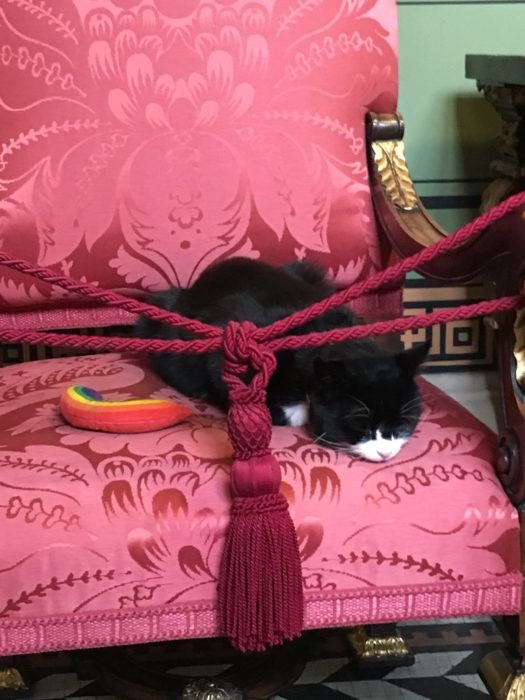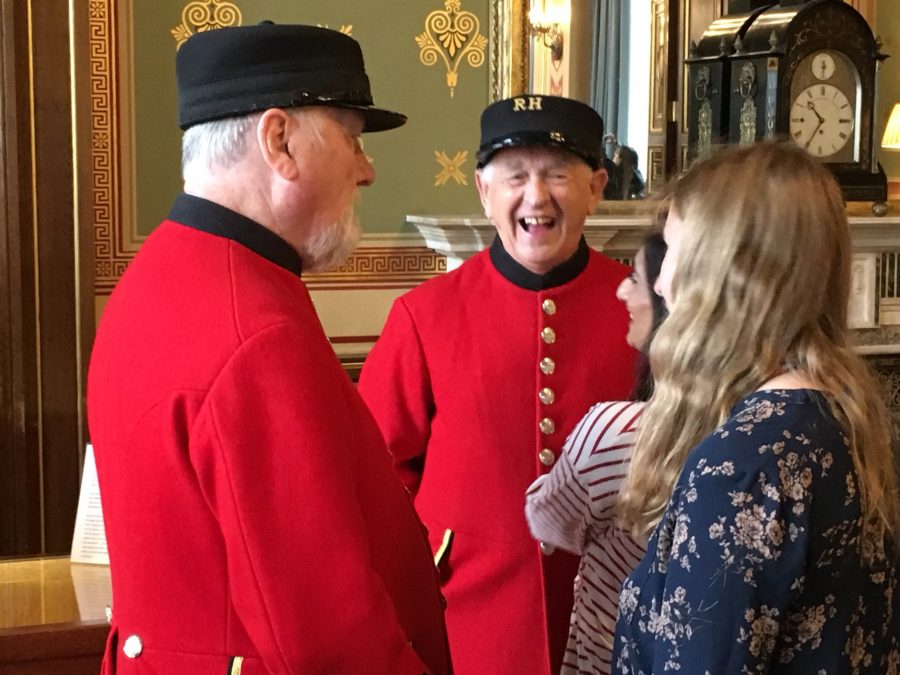5th October 2018 London,UK
Open House
Now on its 27th edition, the Open House London weekend is a celebration of this great city, and above all of its bricks and mortar. The focus is both on the new arrivals on the London skyline and on understanding and appreciating the histories of the older buildings which make up its complex urban fabric. The weekend is run by the Open City charity: there is even a worldwide network of more than forty cities participating in the programme.
More than eight hundred buildings, across every London borough, opened their doors on the weekend of 22-23 September. I’m delighted that the Foreign and Commonwealth Office was among them. This was an important year for our King Charles Street building: its 150th anniversary. The FCO is one of the most popular destinations of the weekend, and this year we fielded some 12,500 visitors, up on last year despite some poor weather. It is easy to see why visitors want to come. This is the only occasion during the year when a building which is both architecturally remarkable and has been witness to many important events in British and world history is open to all those who are curious to learn what we are about.
The Foreign Office dates from 1782. A bust of the first ever Foreign Secretary, Charles James Fox, surveys the Grand Staircase of the present building. The look in his eyes may be one of envy, as the stairs were nothing like as grand in his day: the Foreign Office occupied several sites, each proving unsatisfactory for a growing department, until a competition was launched in 1856 for a new purpose-built Foreign Office building. The architect selected for the job was not the winner of the competition, but George Gilbert Scott was a good choice. He had fundamentally to change his original Gothic design for the building, as the then Prime Minister, Palmerston, regarded the style as somewhat barbaric, but following a study tour in Europe came up with the classical design that assuaged the Prime Minister.

The building takes the form of a quadrangle around a large central courtyard, and was designed to house not one but four government ministries. Scott was responsible for three of them: the Foreign, Colonial and Home Offices. The fourth was the India Office, who already had as their surveyor a distinguished architect; Matthew Digby Wyatt. A deal was struck under which Scott took responsibility for the exterior of the India Office, as an intrinsic part of the whole building, while Wyatt took on the interior.
It is in the juxtaposition of the work of these two great architects that much of the eclectic charm of the building is founded. It is tempting to see in Wyatt’s designs for the India Office something of the modernising spirit for which the Indian Civil Service became known. One thinks of the Northcote-Trevelyan Report, with its focus on recruitment by open competition and promotion on merit, which grew out of practices in the Indian Civil Service. For example, the little metal wheels used for the opening of the partition windows around the sumptuous Durbar Court. But both Wyatt’s and Scott’s designs were focused on projecting British power: soft power, if you like. Scott’s showy Grand Staircase, embellished with the triumphant imperial murals of Sigmund Goetze, dating from the First World War, captures most clearly an intent to fill with awe those who came to call on the ministers of the day. But it is seen too in Wyatt’s charming Muses Stair, decorated with cherubs representing Roman virtues, up which visitors would come to the office of the Secretary for India.

Admiring the beauty of the building today, it seems unthinkable that the government came close to demolishing it in the 1960s, with then Foreign Secretary Rab Butler declaring in 1963 that “we cannot afford to stable a white elephant in Whitehall.” Plans were drawn up under Geoffrey Rippon, Minister for Public Building and Works, to redesign Whitehall, involving the demolition of the Foreign Office building. A public outcry saved it, and the receipt of Grade I listed status secured it. A seventeen-year restoration project was launched in 1984, bringing the fine areas of the building to the impressive state in which they now greet visitors. I joined the Foreign and Commonwealth Office as a graduate recruit in 1987, and it has been wonderful to witness the building emerging into a state with which we can be proud.
The Open House tour aimed to show visitors something of the modern Foreign Office and the work diplomats do today, as well as celebrating the history of the building. Visitors were greeted by a message from Foreign Secretary Jeremy Hunt. Members of staff were on hand to talk about their day jobs in areas as different as responding to crises affecting British citizens overseas and delivering the forthcoming conference drawing attention to the harm caused by the illegal wildlife trade. And visitors had the chance to view a brand new installation: the Mirror Challenge. This highlights those top jobs in the Foreign and Commonwealth Office which have never been held by a woman: from Ambassador in Paris to Permanent Under-Secretary, representing each by a mirror, encouraging women diplomats to picture themselves in these roles.

I hope those who visited the FCO left with a sense of an organisation which is both proud of its past and proud of the work it does today. There is always something new to learn about our amazing building. I have walked into the sumptuous Locarno Dining Room on hundreds of occasions over the years. It was only through the children’s quiz we handed out to our younger visitors that I discovered that its brass door hinges are decorated with finials shaped like acorns. Truly a building in which it is a privilege to work.
2019 (Saturday 21st September) was superb and the summer weather remarkabke.